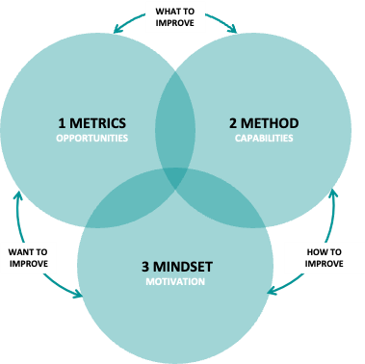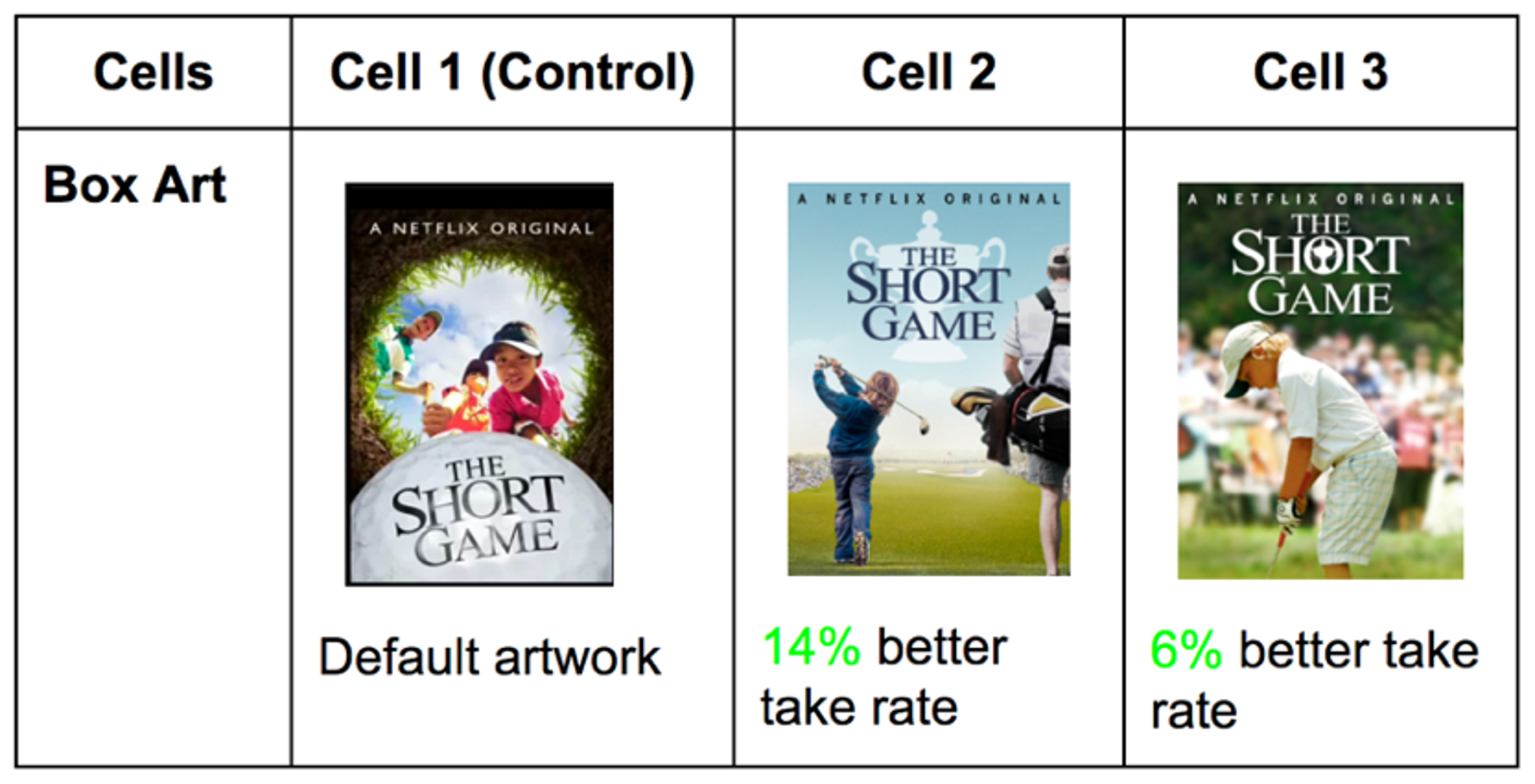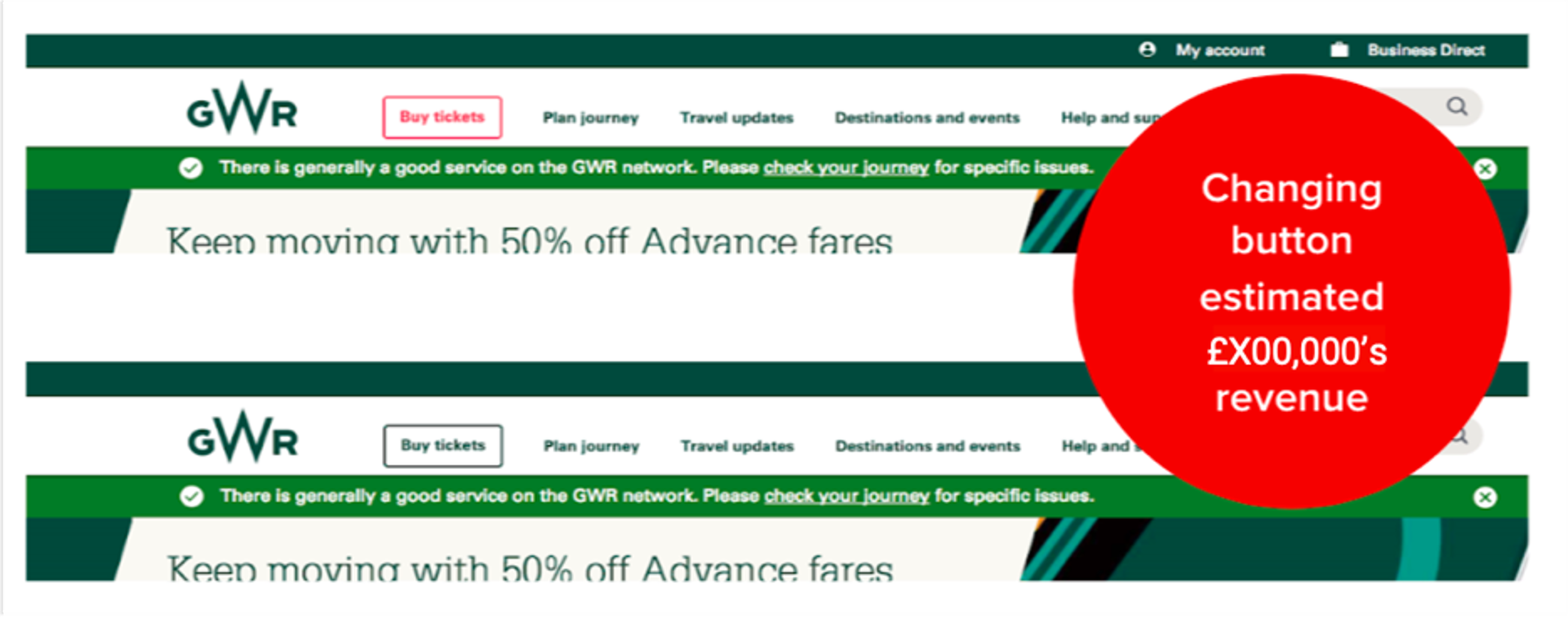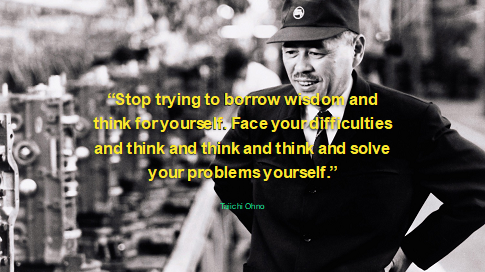.png)

Figure 1. Creating a culture of continuous improvement
1. The right metrics
Establishing a clear line of sight between CX improvements and strategic outcomes is vital to getting buy-in to fund CX improvements. Increasing the speed of your experimentation is pointless if you don’t know whether it’s creating value.
Find your North Star
A North Star Metric (NSM) is a single measurement that best predicts the long-term success of a particular test.
Establishing a single metric everyone agrees on is useful when running multiple tests, as it speeds-up decision making and helps aligns teams around a common goal.
A good NSM has the following qualities:
- It should be a leading, not a lagging indicator.
- It should be something teams can influence.
- It should reflect customer value.
An NSM should be something that leads to revenue, rather than a commercial outcome.
There’s a risk your experimentation programme will become a tactical CRO (conversation rate optimisation) initiative if you make conversion your primary objective. Success will likely also be short-lived, as uplifts in revenue will become increasingly hard to sustain.
An NSM should reflect the actions or moments when customers realise value from your product. This helps you stay focused on improving CX in ways that benefit both your customers and your business. Measuring things like engagement or higher-funnel metrics can also be useful for adding context to results, but these should be secondary, not primary measures of success.
For example, Netflix spent 10 years using ‘grabs attention within 90 seconds’ to optimise their recommendations system, as this was how long it took users to lose interest and do something else instead. When they ran experiments with different artwork, they found they could shift their North Star Metric without affecting engagement. This allowed them to create the perfect artwork for each title which delivered the maximum number of plays from their largest segment. They also experimented with finding the best artwork for each individual member by highlighting an aspect of a title that was most relevant.

Figure 2. Netflix A/B test to optimise artwork
2. The right method
If every proposed experiment or idea needs to pass a stringent review and approval process, then the volume of tests you can run will be limited.
However, it’s important to establish guidelines and guardrails so your team has a robust, scientific approach to problem-solving that’s shared across the business.
Small tests, deeper insights
The most common form of experimentation is A/B testing. The aim is to compare different versions of a feature to understand which one performs best.
Breaking-down tests into small experiments avoids the risk of getting ambiguous results and they are quicker to run, increasing the speed at which you can gather feedback.
Experiments start with a hypothesis about a potential improvement before formulating tests to see if it's correct. The ability to generate a hypothesis depends on your ability to know your customers. Access to data or analytics can help gauge historical or current trends, but you need qualitative sources such as interviews, focus groups, and usability testing, to understand how customers think, feel, decide, or react.
Techniques such as ‘5 Whys’ where you get to the root of the problem quickly by asking ‘Why’ five times, can be useful here in getting to the root cause of a problem, before starting to frame potential solutions.
For example, when DCX started running a continuous improvement programme for GWR.com, we found the website was performing well for conversion, but traffic was down, as there were key points in the journey where customers were dropping out.By asking why, we discovered the problem was time. More specifically, the time it was taking users to re-orientate themselves when moving from a partner or referral site.
Research by a team at Microsoft found that the likelihood of someone leaving a website was at its highest in the first 10 seconds. By making small improvements so users can quickly find their next step, the potential revenue gains were in the hundreds of thousands. We used this insight to optimise other key landing pages that would deliver significant uplifts in revenue for GWR.

Figure 3. Proposed improvements and £ uplift for GWR.com
3. The Right Mindset
The ability to innovate first requires acknowledgment that there’s room to improve. The fear of being blamed, or being seen to be blame others, can sometimes be a barrier that prevents individuals or teams speaking up.
Fail smarter, not faster
Continuous improvement requires an environment of ‘psychological safety’. This concept comes from the work of Professor Amy Edmondson who defined it as “a belief that one will not be punished or humiliated for speaking up with ideas, questions, concerns, or mistakes.”
She found that higher performing teams appeared to make more mistakes than others. This echoes the experience of companies with large-scale testing programmes - most A/B tests are unsuccessful. However, this has the interesting effect of making it ‘ok to fail’ and can help grow demand and the supply of new ideas.
A culture of continuous improvement is also different to a typical CRO programme where failed tests are never looked at again. Rather than seeing failed tests as the wrong solution, they could be a sign that you haven’t fully understood the problem.
A culture of continuous improvement is also different to a product development project where teams can easily get attached to their ideas and go looking for validation. Observing without preconceptions is a key skill to obtain a deeper understanding of your customers. Committing to testing before putting changes into production means you need to trust your data on and opinions of your customers.
Building a culture of continuous improvement
An organisation’s culture is composed of the daily habits and routines, or ‘the ways things are done around here.’ Changing this can be challenging. Our recent report into digital transformation and business agility found that 90% of businesses said company culture prevented improvements to their digital capabilities.
Establishing a process of continuous experimentation based on common goals and a shared vision of success will accelerate progress towards providing the best experience for customers, which will also deliver value for your business.
You need to analyse and standardise how experimentation can be used as fly-wheel for driving long-term growth through better CX for your business.

Figure 4. Taiichi Ono, GM Toyota. Founder of TPS / Lean manufacturing
How DCX can help drive change for you
Establishing a culture of continuous improvement is essential for enhancing the customer experience. It fosters a diverse range of ideas, promotes collaboration across departments, encourages innovative thinking focused on the customer, and drives ongoing learning and improvement.
Setting clear goals on culture can also build resilience and adaptability, essential for navigating today's fast-paced business environment.
For over 20 years, DCX has been bringing digital transformation programmes to life with great success, ensuring organisations all around the world are getting it right by changing their culture, revising their strategy, and driving a better customer experience.
If you're looking to start your digital transformation journey, consider partnering with us. We can help you create an agile and innovation culture, and offer you a suite of digital transformation capabilities, which will help you improve business operations, transform customer experience for the better, and give your brand a competitive advantage - at a time when it's needed!
Get in touch with us today.


